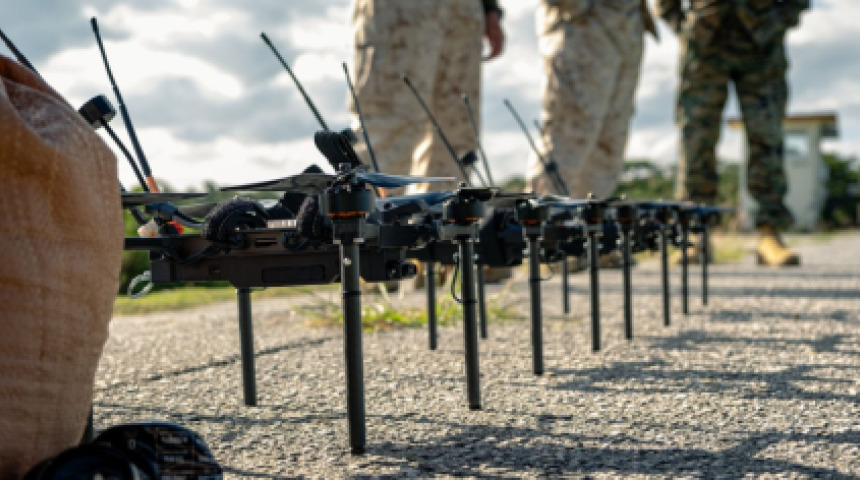與台灣一水之隔:日本與那國島軍事化進程與戰略意涵

(Ayaka McGill/AP)
與那國島(Yonaguni)是日本最西端的小島,僅距台灣約110公里。這個原本以潛水觀光、野馬和古文化聞名的靜謐島嶼,如今正快速轉變為日本西南防線的前哨。面對來自中國日益增強的軍事壓力,日本政府正加速將與那國島打造為一座戰略軍事支點。
軍事部署的強化與戰略角色
自2016年起,日本自衛隊便在與那國島設立了「沿岸監視部隊」,負責監測東海與台灣周邊海空域的動態,尤其是中國海軍與空軍的行動。島上的雷達設施連接本州與沖繩的防空網,具備高解析監控能力,扮演預警與情報蒐集的關鍵角色。
近期防衛省更計畫增設地對艦與地對空飛彈部隊,可能部署12式岸基反艦飛彈,並升級機場與港口設施,以支援更大型軍機與軍艦的進駐。這是整體「西南諸島防衛網」的一部分,與石垣島、宮古島、奄美大島等形成聯防體系。
居民的反應與民軍矛盾
島上約1,500名居民對軍事化持不同看法。支持者認為軍隊帶來基礎建設與經濟收益,如道路改善與營建工作。反對者則擔憂,軍事設施讓與那國成為潛在打擊目標,破壞生態與和平生活,甚至引發人口外流。
區域緊張局勢的升溫
2024年9月,中國遼寧號航空母艦與兩艘驅逐艦曾駛入與那國島與石垣島間海域。中國強調為例行演訓,但日本視為對西南島鏈的示威挑釁。此外,中國無人機、戰機持續進入日本防空識別區,與那國的雷達站成為偵測前哨。
這些行動導致日方與美軍加強聯合演習,模擬登陸、防空與反艦戰術,以應對可能的台海衝突外溢。
未來展望:撤離計畫與風險評估
日本政府於2025年3月公布撤離預案,預計若爆發衝突,將從與那國島及其他離島撤離超過10萬居民。該計畫包括船舶與飛機的動員,並從2026年起實施撤離演習,以測試應變能力與地方協調機制。
這顯示官方認知到與那國作為戰略前線所面臨的高度風險,並試圖在強化防衛與保障居民安全之間取得平衡。
A Narrow Strait from Taiwan: Japan’s Militarization of Yonaguni and Its Strategic Significance
Yonaguni Island, the westernmost point of Japan, lies just 110 kilometers from Taiwan. Once known for its diving spots, wild horses, and rich culture, this tranquil island is rapidly transforming into a military outpost on Japan’s southwestern frontier. Facing increasing military pressure from China, Tokyo is fast-tracking efforts to turn Yonaguni into a strategic military hub.
Strengthening Military Presence and Strategic Role
Since 2016, Japan’s Self-Defense Forces (JSDF) have stationed a coastal surveillance unit on Yonaguni to monitor activity in the East China Sea and around Taiwan, particularly Chinese naval and aerial maneuvers. The island’s radar system is integrated with Japan’s larger air defense network, serving as a vital node for early warning and intelligence gathering.
The Ministry of Defense now plans to expand the island’s role by deploying land-to-ship and land-to-air missile units—potentially the Type 12 surface-to-ship missile—and upgrading air and sea facilities to accommodate larger aircraft and naval vessels. These moves are part of a broader “Southwestern Islands Defense Line” linking Yonaguni with Ishigaki, Miyako, and Amami islands.
Local Reactions and Civil-Military Tensions
Yonaguni’s population of about 1,500 is divided on the issue of militarization. Supporters argue that the military presence improves infrastructure and stimulates the economy, such as through road upgrades and construction jobs. Critics fear that the buildup turns the island into a potential target, damages the local environment, and disrupts its peaceful way of life—possibly encouraging residents to leave.
Rising Regional Tensions
In September 2024, China’s Liaoning aircraft carrier and two destroyers passed between Yonaguni and Ishigaki Islands. While Beijing called the move routine training, Tokyo viewed it as a provocative show of force near Japan’s southwestern island chain. Meanwhile, Chinese drones and fighter jets have repeatedly entered Japan’s Air Defense Identification Zone (ADIZ), making Yonaguni’s radar site a frontline observer.
These developments have prompted enhanced Japan-U.S. joint drills simulating amphibious operations, anti-air tactics, and anti-ship warfare in preparation for possible spillover from a Taiwan conflict.
Future Outlook: Evacuation Plans and Risk Awareness
In March 2025, the Japanese government announced a civilian evacuation plan, aiming to relocate over 100,000 residents from Yonaguni and nearby islands in the event of conflict. The plan involves the use of ships and aircraft, with evacuation drills set to begin in 2026 to test response readiness and local coordination.
The initiative reflects Tokyo’s acknowledgment of Yonaguni’s vulnerability as a frontline defense outpost, balancing the need for national security with civilian safety.




回應文章建議規則: